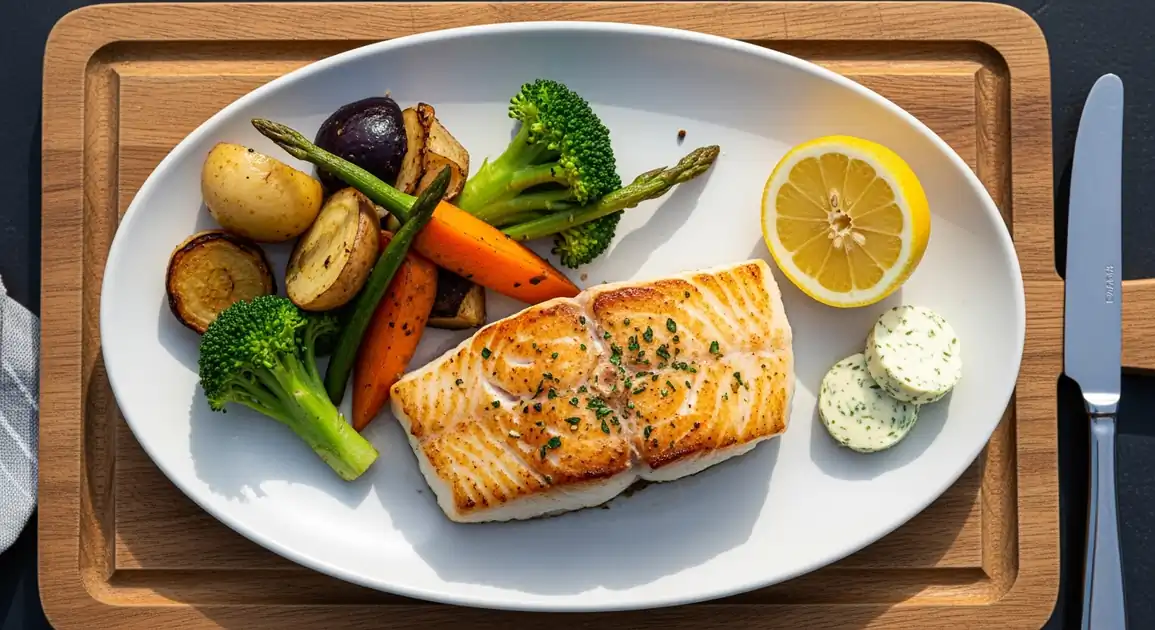Hapuku (New Zealand Groper)
Hapuku

Description
In Queenstown, New Zealand's adventure tourism capital nestled on the shores of Lake Wakatipu, hapuku features prominently on menus of premium restaurants. While not caught locally in the lake itself, hapuku is brought in fresh from coastal waters, particularly from the South Island's southern and eastern coasts. Queenstown's high-end dining scene showcases this premium fish to international visitors seeking authentic New Zealand culinary experiences.
Dietary Information
Serving information
Serving style
Elegantly plated as befits Queenstown's upscale dining scene, often with artistic presentation. Typically served as a centerpiece protein with local vegetables, microgreens, and decorative elements reflecting the surrounding alpine environment.
Quick facts
Queenstown's fine dining establishments typically serve dinner from 5:30 PM - 10 PM. Lunch is generally available from 12 PM - 2:30 PM at select venues.
Safety Tips
What to Look For
-
Clear, bright flesh with natural moisture
Quality hapuku fillets should have translucent, pearly white to slightly pink flesh that looks moist but not wet or slimy.
-
Firm texture that springs back when pressed
Fresh hapuku has firm flesh that rebounds when gently pressed with a finger—this indicates it hasn't begun to break down.
-
Clean, oceanic smell
Fresh hapuku should smell pleasantly of the ocean—never fishy, sour, or ammonia-like.
-
Establishment's reputation for seafood quality
Restaurants known for seafood expertise or markets with high turnover are more likely to serve fresh, properly handled hapuku.
-
Transparency about source and catch date
Quality vendors and restaurants will know and willingly share when and where their hapuku was caught.
What to avoid
-
Fish with a strong fishy or ammonia smell
Any strong unpleasant odor indicates decomposition has begun and the fish is not fresh.
-
Discolored flesh with browning edges or darkening
Discoloration suggests oxidation has occurred and the fish is aging.
-
Excessive liquid in packaged fillets
Too much liquid in packaging indicates cell breakdown and loss of texture and flavor.
-
Squishy texture that holds finger indentations
Fresh fish should be firm. If your finger leaves an indentation, the flesh has begun to degrade.
-
Bargain prices for "premium" hapuku
Hapuku is a premium fish with a price to match—suspiciously cheap hapuku may be mislabeled or of poor quality.
Price information
Price range
Budget tips
- Look for early bird or pre-theater dining specials where hapuku might be offered at a reduced price.
- Some restaurants offer smaller portions at lunch for a better value.
- Wine-pairing deals sometimes include hapuku courses at a better overall value.
- Consider restaurants slightly outside the main tourist areas for better pricing on the same quality fish.
Value indicators
- Mention of specific fishing region (e.g., 'Bluff hapuku').
- Indication that the fish is 'line-caught' rather than trawled.
- Restaurants that describe their relationship with specific fishers or suppliers.
- Detailed description of preparation method showing chef's investment in the dish.
Where to Find This Dish
Lakefront Dining
Premium restaurants along Lake Wakatipu's shores feature hapuku with stunning water and mountain views.
Steamer Wharf, Beach Street
Dinner (6 PM - 9 PM), Sunset dining
Queenstown Hill
Elevated restaurants with panoramic views often include hapuku on their fine dining menus.
Skyline Gondola restaurants, Boutique hotel restaurants
Dinner (6 PM - 10 PM)
Arrowtown Vicinity
This historic gold mining town near Queenstown has several upscale restaurants that showcase premium New Zealand seafood.
Buckingham Street, Arrow River
Dinner (6 PM - 9 PM), Weekend lunch (12 PM - 2 PM)
Vendor Tips
- Reserve tables at premium restaurants in advance if you specifically want to try hapuku.
- Ask servers about the specific origin of their hapuku and delivery schedules.
- Inquire about the chef's recommended cooking method for that day's catch.
- Some restaurants may offer hapuku as part of a 'trust the chef' or degustation menu.
How to Order
Regional Variations
-
Alpine Preparation
(Alpine Preparation)
Queenstown chefs sometimes incorporate mountain herbs or Central Otago ingredients like thyme, saffron, or stone fruit accompaniments.
-
Asian Fusion
(Asian Fusion)
Reflecting Queenstown's international influences, some restaurants prepare hapuku with Japanese, Thai, or general Pacific Rim influences.
-
Wine-country Style
(Wine-country Style)
Preparation methods that specifically complement Central Otago wines, often using wine reductions or complementary fruit elements in the dish.
Cultural context
History
Hapuku has long been valued by Māori, who traditionally caught these large fish in deeper waters using specialized techniques. Called "hāpuku" in te reo Māori, it was considered a prestigious catch due to its size and excellent eating qualities. European settlers quickly recognized its culinary value, and it became commercially important by the late 19th century. Today, hapuku remains a prized catch, though conservation measures now regulate its harvest as awareness of its slow growth rate and vulnerability to overfishing has increased.
Local significance
Though not caught in Queenstown's lakes, hapuku represents New Zealand's premium seafood offering to international visitors. Its presence on menus signifies the restaurant's commitment to showcasing the best of New Zealand's cuisine.
Eating customs
- Typically enjoyed as part of a leisurely dining experience rather than casual eating.
- Often paired specifically with local Central Otago wines.
- Frequently served with a story about its origin and sustainable harvesting.